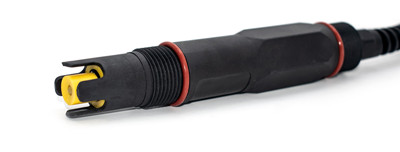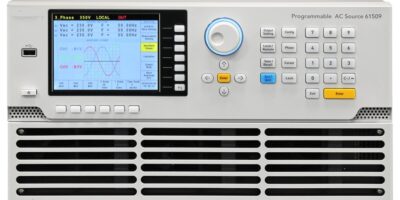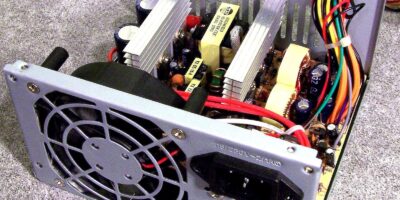The global Ion Selective Sensors market size was valued at USD 178.68 million in 2023 and is expected to expand at a CAGR of 15.28% during the forecast period, reaching USD 737.84 million by 2033.
Overview of Ion Selective Sensors
Definition
Ion selective sensors are analytical devices designed to detect specific ions in a solution. They convert the ion activity into an electrical signal, allowing for precise measurement of ion concentrations.
Historical Development
The concept of ion selective sensors emerged in the mid-20th century. Early developments focused on glass electrodes for measuring pH. Advances in membrane technology and microelectronics have since expanded their capabilities and applications.
Market Relevance
With growing applications in environmental monitoring, healthcare, and industrial processes, the ion selective sensors market is experiencing significant growth. Their ability to provide accurate and rapid measurements makes them indispensable in modern analytical techniques.
Working Principles of Ion Selective Sensors
Basic Mechanisms
Ion selective sensors operate by using a selective membrane that interacts specifically with a target ion. The interaction alters the membrane potential, which is then measured and converted into an electrical signal.
Types of Ion Selective Sensors
- Glass Electrodes: Commonly used for pH measurement.
- Solid-State Sensors: Utilize solid ion conductors.
- Polymer Membrane Sensors: Use ion-selective polymers for specific ion detection.
- Enzyme Electrodes: Incorporate enzymes for specific ion reactions.
Key Components
- Selective Membrane: Determines the specificity of the sensor.
- Reference Electrode: Provides a stable reference potential.
- Transducer: Converts the ionic activity into an electrical signal.
Objectives of Using Ion Selective Sensors
Precision in Measurement
Ion selective sensors offer high accuracy in detecting and measuring specific ions. This precision is critical in applications such as clinical diagnostics and environmental analysis.
Real-Time Monitoring
These sensors provide real-time data, essential for processes that require continuous monitoring and quick decision-making, such as industrial production and water quality management.
Cost Efficiency
Ion selective sensors are generally cost-effective compared to other analytical techniques, offering a balance between accuracy and affordability.
Demand and Key Growth Opportunities
Industrial Demand
Industries such as chemical manufacturing and food processing require precise ion measurement for quality control and safety compliance, driving the demand for ion selective sensors.
Medical and Healthcare Applications
In healthcare, ion selective sensors are used in blood gas analyzers and electrolyte monitoring devices. Their ability to provide rapid and accurate results is crucial in medical diagnostics and patient care.
Environmental Monitoring
The need for monitoring environmental pollutants and water quality has increased the adoption of ion selective sensors in environmental science. They are used to detect contaminants and ensure compliance with environmental regulations.
Market Development and Trends
Technological Advancements
Recent advancements include the development of miniaturized sensors and integration with digital systems for enhanced data processing and connectivity.
Regulatory Impacts
Regulations concerning environmental protection and healthcare standards are influencing the market by driving the need for accurate and reliable ion measurement solutions.
Market Forecasts
The ion selective sensors market is projected to grow significantly, with an increasing number of applications across various sectors and advancements in sensor technology.
Challenges and Limitations
Technical Constraints
Ion selective sensors can face issues such as interference from other ions and the limited lifespan of the selective membranes.
Market Barriers
High initial costs and the need for specialized knowledge to operate and interpret the results can be barriers to wider adoption.
Mitigation Strategies
Developing more robust membranes and user-friendly interfaces can help mitigate these challenges, making ion selective sensors more accessible and reliable.
Receive the FREE Sample Report of Ion Selective Sensors Market Research Insights @ https://stringentdatalytics.com/sample-request/ion-selective-sensors-market/9497/
Market Segmentations:
Global Ion Selective Sensors Market: By Company
• Thermo Scientific
• Metrohm
• Cole-Parmer
• Siemens
• Van London
• NT Sensors
• Hach
• Weiss Research
• Mettler Toledo
• Jiangsu SWR
• Bante Instruments
• Shanghai INESA
Global Ion Selective Sensors Market: By Type
• Glass
• Solid State
• Liquid Based
• Compound Electrode
Global Ion Selective Sensors Market: By Application
• Industrial
• Agriculture
• Environmental Science
• Medicine
• Others
Regional Analysis of Global Ion Selective Sensors Market
All the regional segmentation has been studied based on recent and future trends, and the market is forecasted throughout the prediction period. The countries covered in the regional analysis of the Global Ion Selective Sensors market report are U.S., Canada, and Mexico in North America, Germany, France, U.K., Russia, Italy, Spain, Turkey, Netherlands, Switzerland, Belgium, and Rest of Europe in Europe, Singapore, Malaysia, Australia, Thailand, Indonesia, Philippines, China, Japan, India, South Korea, Rest of Asia-Pacific (APAC) in the Asia-Pacific (APAC), Saudi Arabia, U.A.E, South Africa, Egypt, Israel, Rest of Middle East and Africa (MEA) as a part of Middle East and Africa (MEA), and Argentina, Brazil, and Rest of South America as part of South America.
Click to Purchase Ion Selective Sensors Market Research Report @ https://stringentdatalytics.com/purchase/ion-selective-sensors-market/9497/
Future Prospects and Innovations
Emerging Technologies
Advancements in nanotechnology and materials science are leading to the development of more sensitive and selective ion sensors, potentially revolutionizing their applications.
Potential Market Growth
The integration of ion selective sensors with smart technologies and IoT (Internet of Things) devices is expected to open new market opportunities and applications.
R&D Directions
Ongoing research is focused on enhancing the selectivity, sensitivity, and durability of ion selective sensors, as well as expanding their range of detectable ions.
Comparative Analysis with Other Technologies
Ion Selective Electrodes vs. Other Sensors
Compared to other sensors, ion selective electrodes offer specific advantages in terms of selectivity and response time but may be less robust in harsh environments.
Cost-Benefit Analysis
Ion selective sensors typically offer a good cost-benefit ratio, balancing accuracy with affordability. They are often preferred in applications where specific ion detection is crucial.
Performance Metrics
Performance metrics such as response time, detection limit, and selectivity are key factors in choosing between ion selective sensors and other analytical methods.
User Guides and Best Practices
Installation and Calibration
Proper installation and calibration are critical for accurate measurements. Follow manufacturer guidelines and use appropriate calibration solutions.
Maintenance Tips
Regular maintenance, including cleaning and replacing membranes, ensures the longevity and accuracy of ion selective sensors.
Troubleshooting
Common issues such as drift or interference can often be resolved by checking the sensor connections, calibrating regularly, and ensuring the proper storage of sensors.
About Stringent Datalytics
Stringent Datalytics offers both custom and syndicated market research reports. Custom market research reports are tailored to a specific client’s needs and requirements. These reports provide unique insights into a particular industry or market segment and can help businesses make informed decisions about their strategies and operations.
Syndicated market research reports, on the other hand, are pre-existing reports that are available for purchase by multiple clients. These reports are often produced on a regular basis, such as annually or quarterly, and cover a broad range of industries and market segments. Syndicated reports provide clients with insights into industry trends, market sizes, and competitive landscapes. By offering both custom and syndicated reports, Stringent Datalytics can provide clients with a range of market research solutions that can be customized to their specific needs.
Reach US
Stringent Datalytics
+1 346 666 6655
Social Channels:
Linkedin | Facebook | Twitter | YouTube




Leave a Reply